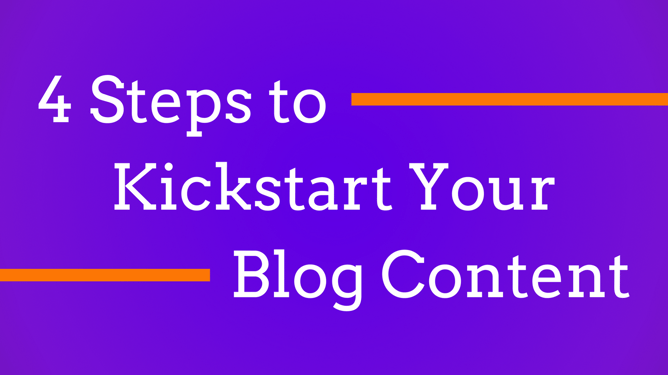
Blogging is one of the greatest inbound marketing tools that a business can use to engage and provide helpful content to educate their audience.
However, before any business can reap the benefits of blogging, they have to come up with creative, useful, and engaging content ideas. Figuring out where to start is oftentimes the most difficult part of the process.
But, have no fear, we have a few tips on ways to get the idea generation juices a-flowin.
Step 1: Understand Why You Want to Start Blogging
The very first step, before putting pen to paper, is coming to a collective understanding within the team about why you want to start a blog for your business, or revamp your current blog. Without this necessary first step, the rest are obsolete
Setting a goal for the blog and establishing a basis for WHY before the WHAT is the most important. This reason could be to gain brand awareness, educate your audience, explain the story of your business, generate leads, or tap into the hot topics of the industry. Once the team agrees on the purpose, you can put your metaphorical thinking caps on.
SEE ALSO: What It Means To Be An Innovative Team In Content Marketing
Step 2: Create Content Buckets
Before you can start generating titles to put in your title bank, it’s important to create buckets to categorize your content. This is a crucial step in the process because it dictates the direction of the content you will be creating.
It gives you and your team a place to start to create relevant content to build your company’s reputation and speak to your specific audience. It also keeps people who are contributing to the blog from going off topic and keeps the remaining steps of this process more productive.
To decide what buckets to create, start by thinking about the different facets of your company. What areas of the industry and company do you want to focus on when it comes to content?
For us, it’s about 6 different categories ranging from business development and culture to inbound marketing and sales enablement. These buckets of content are helpful for giving us direction when writing blogs and keeps our content focused on what we, who we are, and our audience cares about.
Once you have identified those areas to focus on, give them titles.
Step 3: Generate Topic Areas to Focus On
The next step is to begin thinking about topics that fit into the buckets you just created.
Think long and hard about who your audience is. What topics will interest them? What topics do they not know about that they should? What problems do they have that you can solve? What might they be searching for? These are all valid and necessary questions to ask yourself before generating topic ideas.
If you are stumped at where to start, a helpful tool to get this step moving is the HubSpot Keyword Tool. It can be really helpful to see what keywords are relevant to your business and what kind of traffic they typically get. We use this for not only our own content building, but for all of our client partners as well. It has proven to be successful for driving traffic to our content. The keyword tool can be super beneficial for the next step as well.
SEE ALSO: The Blogger's Checklist
Step 4: Brainstorm Titles Related to Topic Areas
On to title generation! Take another look at the topics you just created. Ask yourself again, “what does my audience want to know?”, and begin to place your finger on the bits of each topic that would be beneficial to your audience.
There are a few elements that are helpful to use within blog titles that are engaging and often lead to more involvement in your content. Here are just a few:
- Use numbers and facts.
- Ask your audience a question.
- Use the keyword in your title.
- Keep it short, and sweet.
When it comes to the title length, remember to KISS (keep it simple, stupid). Less is more! Don’t write a novel because it will get cut off by Google, people only read the beginning of a long title, and it will likely be a run-on sentence anyway. None are aspects to describe a title of a good blog.
With these 4 steps, you should be able to start an awesome blogging campaign for you team and your company that will help you achieve your goal.
If you need help determining the best blogging strategy for your business, we’re happy to help. Click here to get a free assessment of your current online presence.


 BACK TO ARTICLES
BACK TO ARTICLES 


